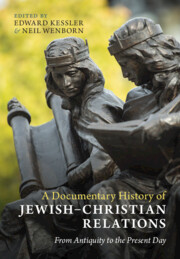Book contents
Part III - 1800 to the Present Day
Published online by Cambridge University Press: aN Invalid Date NaN
- Type
- Chapter
- Information
- A Documentary History of Jewish–Christian RelationsFrom Antiquity to the Present Day, pp. 287 - 288Publisher: Cambridge University PressPrint publication year: 2024

